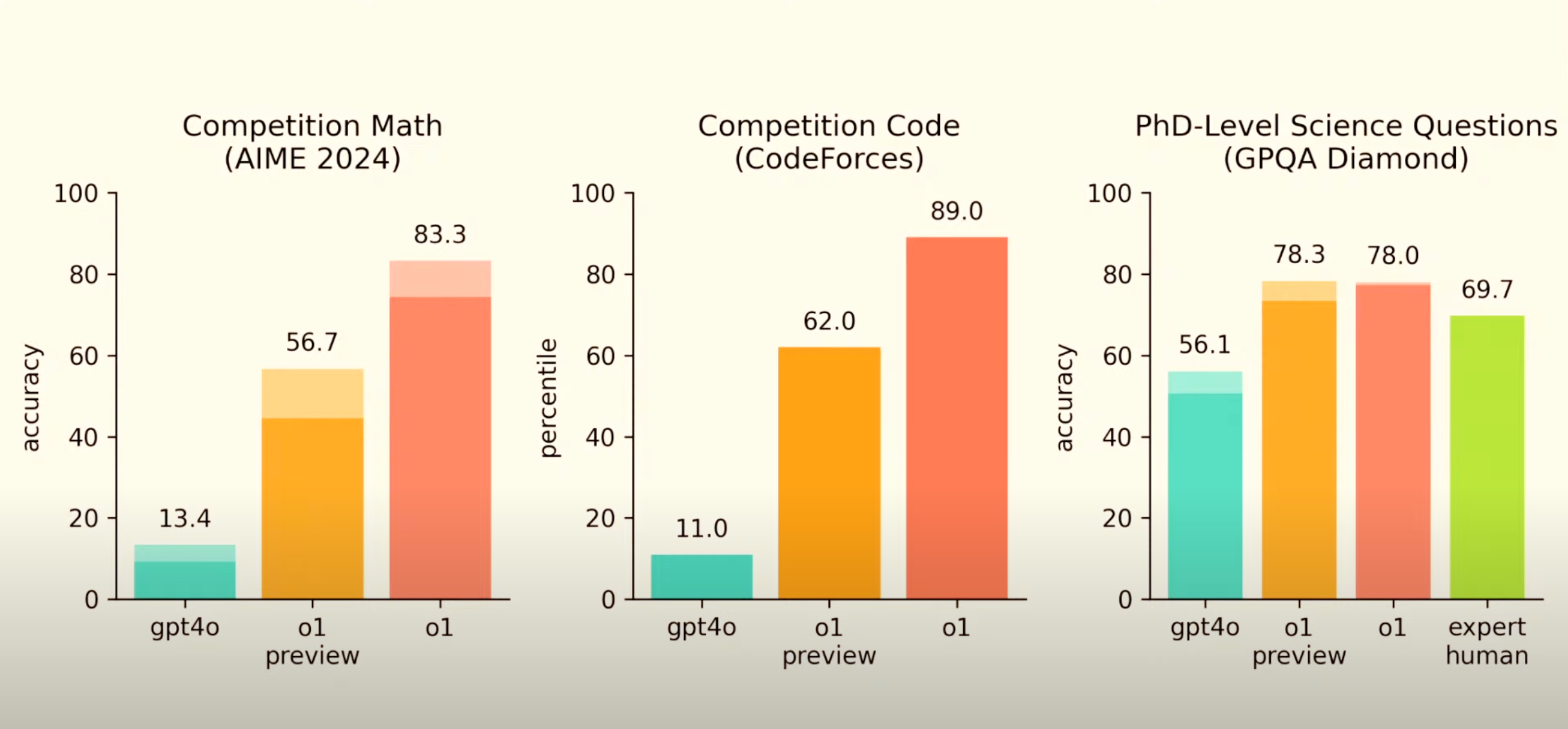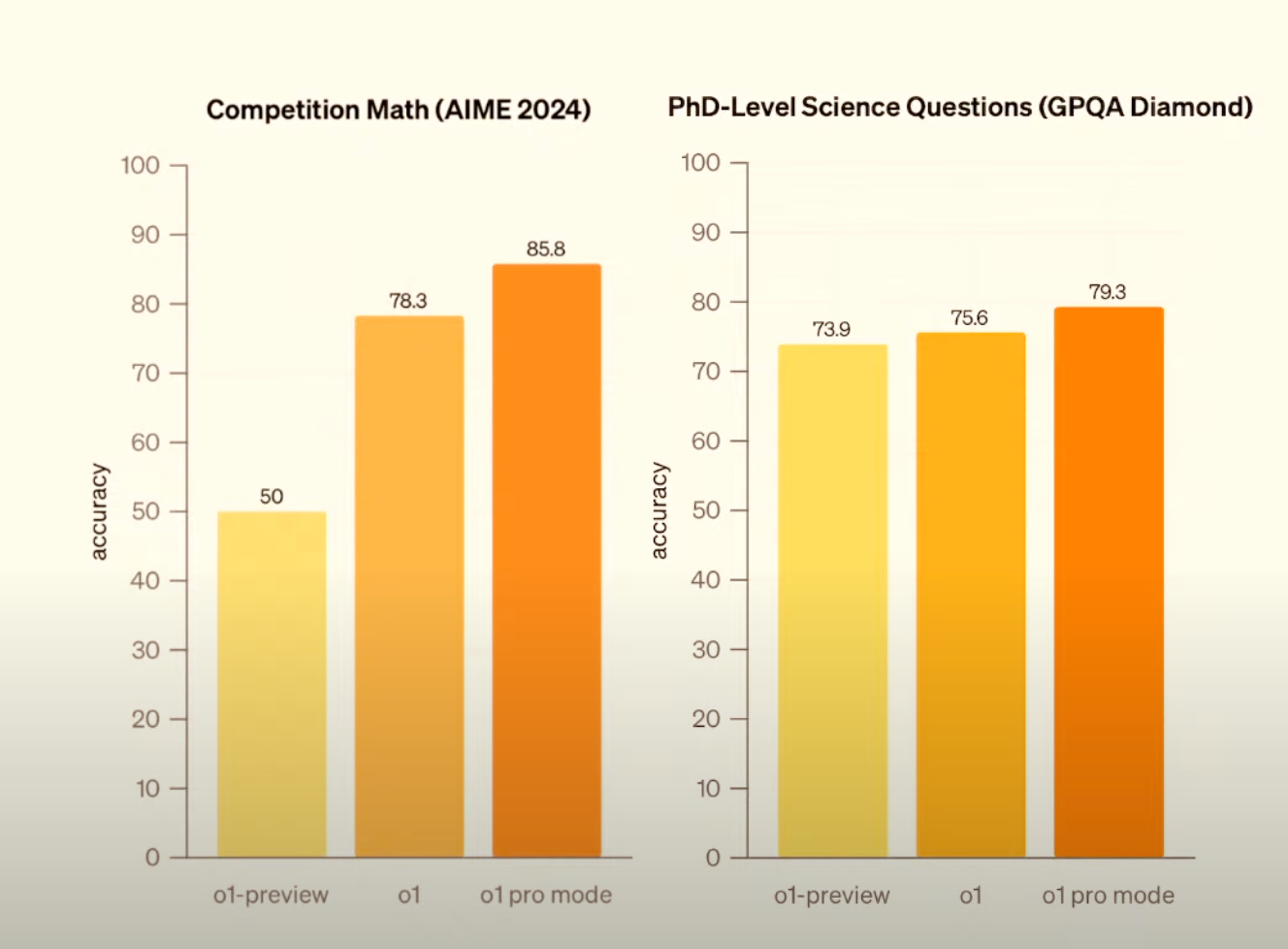Day 1 Summary of the 12 Days of OpenAI Live - Introducing the O1 Model and ChatGPT Pro
- Name
- Tison Brokenshire
Updated on

The holiday season often brings surprises, and OpenAI just unwrapped its first gift on Day 1 of their “12 Days of OpenAI” event. In a move aimed at both everyday users and serious power users, the company announced two major developments: the official launch of the new O1 model and a premium subscription tier called ChatGPT Pro. These innovations promise not only heightened raw intelligence and speed, but also unlimited usage, specialized “Pro Mode” computing, and even better multimodal capabilities that combine text and images.
The “12 Days of OpenAI” Concept
OpenAI has embarked on a unique endeavor: across 12 weekdays, they are unveiling fresh features, tools, and improvements each day. It’s a kind of tech-advent calendar, with each “door” revealing something that feels as significant as a major product release. According to OpenAI’s CEO Sam Altman, this initiative is unprecedented among tech companies. Users can expect a cascade of rapid-fire innovations—like holiday presents delivered daily—culminating in a suite of major upgrades that will carry ChatGPT and its ecosystem into a new era.
Introducing the O1 Model: A Smarter, Faster Successor
At the heart of Day 1’s announcement is the new O1 model. Building upon the previously released O1 preview, this new iteration addresses extensive user feedback and promises dramatic improvements in several key areas:
-
Intelligence and Accuracy:
O1 sets a higher bar for “raw intelligence” compared to GPT-4 and the earlier O1 preview. The research team behind it reports notable leaps in problem-solving across complex math, coding challenges, and general question-answering tasks. In coding benchmarks, for example, O1 outperforms previous models by a meaningful margin. -
Speed and Adaptive Thinking:
One of the biggest critiques of O1 preview was its sometimes ponderous response speed—even for simple queries. Users often saw the model “think” for about 10 seconds before replying with a quick greeting like “Hi.” That’s changed. With O1, easy questions now yield near-instant responses, while more difficult queries trigger the model’s advanced reasoning capabilities. In other words, O1 dynamically adapts how much time it “thinks,” significantly cutting down on wait times while maintaining, and even enhancing, accuracy for tough problems. -
Multimodal Understanding:
O1 now natively supports multimodal input, a highly requested feature. Users can upload images—diagrams, schematics, charts—and ask the model to analyze them alongside text. During the live demonstration, the model skillfully interpreted a diagram of a hypothetical space-based data center cooling system. O1 not only read the power requirements but also reasoned about radiative heat transfer in space, estimating the enormous surface area required for a cooling panel. This represents a major step forward in the model’s contextual reasoning and its potential for technical and creative use cases alike.



The Arrival of ChatGPT Pro: Unlimited Access and O1 Pro Mode
Alongside the release of O1, OpenAI introduced ChatGPT Pro, a premium tier at $200 per month designed for the most demanding users. While the standard Plus subscription already offers priority access and advanced features, ChatGPT Pro takes this a step further:
-
Unlimited Usage:
For heavy users—developers, researchers, engineers—who push the model to its limits, the standard $20 per month plan can feel restrictive. ChatGPT Pro removes these limits, granting practically unlimited computation. This means professionals who rely on ChatGPT for code reviews, scientific research, or large-scale data analysis can now scale their usage without worrying about hitting any caps. -
O1 Pro Mode:
The highlight of the Pro tier is “O1 Pro mode,” which grants access to an even more capable variant of the O1 model. While O1 is already state-of-the-art, O1 Pro mode runs with enhanced computational resources, enabling it to tackle the hardest of problems with even more reliable reasoning. The improvements might look incremental on paper, but for those dealing with advanced math, complex physics, rare biochemical queries, or intricate code debugging, these marginal gains can be game-changing. -
Voice and Reliability Enhancements:
ChatGPT Pro users also gain benefits such as advanced voice features and higher reliability. OpenAI showed that Pro mode’s answers have a noticeably higher probability of being correct, demonstrating the model’s reduced error rate on complex tasks. For professionals who depend on precise and dependable information, these reliability gains can translate to real-world efficiency.
O1 v.s. O1 Preview:

A Glimpse into the Future
With O1 and ChatGPT Pro, OpenAI sets a new standard for large language models:
-
For Everyday Users: Even if you’re not grappling with advanced math or software engineering puzzles, the improved speed and accuracy of O1 and multimodal reasoning will enhance day-to-day interactions. Whether you’re a history buff probing Roman emperors’ timelines or a hobbyist analyzing DIY diagrams, the new model makes ChatGPT feel smoother, faster, and more capable.
-
For Power Users and Professionals: ChatGPT Pro is a watershed moment. The platform now caters directly to those who rely on advanced AI capabilities in their daily workflows. With more compute, enhanced reliability, and the Pro mode’s extra “thinking” power, professionals can push O1 to previously unattainable limits.
-
Coming Soon for Developers: OpenAI also teased that O1’s capabilities—including structured outputs, function calling, and image understanding—will soon reach the API. This will allow developers to integrate O1 into their applications, supercharging an ecosystem of tools, products, and services built on top of OpenAI’s models.
OpenAI’s announcement of ChatGPT Pro Mode, priced at $200 per month, has raised eyebrows—especially among casual users accustomed to the conventional cost structures of SaaS (Software as a Service) products. At first glance, this price tag appears steep, considering most subscription software hovers in the range of a few dollars to maybe $50 per month. Compared to other AI tools, even premium offerings, $200 is a bold ask.
However, thinking of ChatGPT Pro Mode simply as a piece of software might be missing the bigger picture. Instead, imagine it as hiring a virtual intern or research assistant who’s on-call 24/7, tirelessly ready to handle complex tasks—from generating detailed reports and conducting in-depth research to assisting with advanced coding and debugging. On that scale, $200 per month doesn’t just look reasonable—it might be a bargain. Real human talent with similar capabilities (in research, coding, brainstorming, and content creation) would cost significantly more, and certainly wouldn’t be available instantaneously at all hours of the day.
This shift in perspective, from “just another piece of software” to “a perpetual knowledge worker,” could signal a broader industry recalibration. Pricing AI by the traditional SaaS standard—where you pay a monthly fee for a fixed set of features—doesn’t fully capture the value proposition of models like O1. These AI systems can handle tasks with a level of complexity and flexibility that previously required multiple human hires or specialized consultants.
By leaning into this value-based pricing approach, OpenAI may be pioneering a new era of monetization for AI products. Instead of anchoring prices to a familiar SaaS model, future AI pricing may directly correlate with the type and complexity of real-world problems it can solve. For enterprises, startups, and professionals who rely heavily on AI-driven insights, productivity, and code generation, this kind of value-based model could become the norm. In fact, $200/month could be a small upfront investment if it dramatically accelerates development cycles, reduces headcount, and unlocks new business opportunities.
In the long run, this approach might be good for the industry. It encourages providers to continuously refine and differentiate their products, ensuring that premium pricing reflects genuine value rather than arbitrary feature gates. At the same time, it challenges users to think more strategically about their AI spend—optimizing how and when they leverage these tools for maximum ROI, rather than simply treating them as line items in an ever-growing stack of subscriptions.
Yes, $200 per month for ChatGPT Pro Mode might seem like a lot. But as the AI landscape evolves, and models become increasingly adept at performing tasks that blend creativity, technical skill, and domain expertise, we may look back at today’s pricing and recognize it as the early signal of a fundamental shift: from paying for software to investing in artificial intelligence as a form of digital labor.